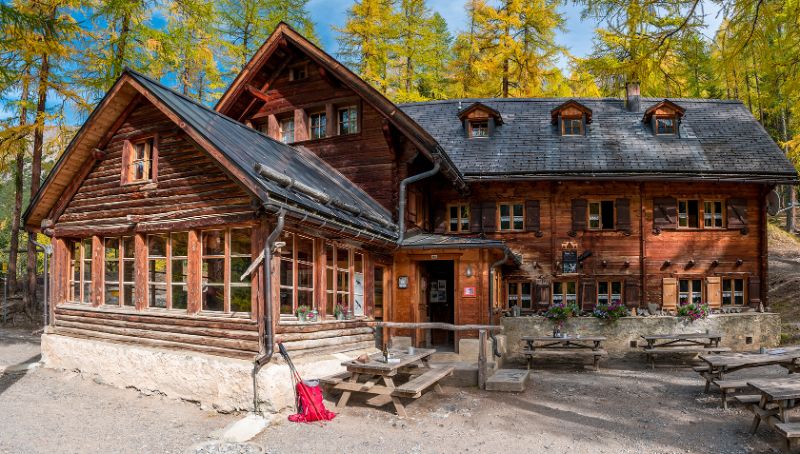A fairer assessment of wastewater treatment in mountain huts
Using water sparingly has always been a matter of course in mountain huts, whether it’s for showering, using the toilet or in the kitchen. Climate change is exacerbating the scarcity of water in the mountains. Mountain huts are therefore pioneers in Switzerland when it comes to water-saving sanitary systems and dry toilets, which dilute the wastewater less. As a result, the concentrations of organic compounds and nitrogen can be several times higher than in the wastewater from municipal wastewater treatment plants. In addition, the amount of wastewater generated fluctuates greatly, because the number of guests depends on the season, the weather and the day of the week. These are difficult conditions for the small wastewater treatment plants where wastewater from the huts is usually treated mechanically and biologically. Often, they also have to work without electricity if the hut does not have an adequate power supply.
Cleaning performance is currently not accurately reflected
The cantonal authorities usually define the required cleaning performance of the small wastewater treatment plants based on the VSA (Swiss Water Association) guidelines for rural areas. Among other things, these guidelines specify threshold limits for the concentration of organic compounds (measured as chemical oxygen demand, or COD) and nitrogen in treated wastewater. However, since the concentration of these substances in wastewater from mountain huts can be significantly higher than in municipal wastewater, a larger percentage has to be removed in order to meet the threshold limits. “This means that those who save water and consequently pollute less water have to invest disproportionately more in wastewater treatment; and even then, compliance with the threshold limits is not always technically possible,” write Chiara Lauber and Lukas Ulrich from the former Eawag spin-off Vuna, as well as Kai Udert, group leader in the Process Engineering department at the aquatic research institute Eawag, in their recently published article in the journal Aqua & Gas. Since the current assessment system does not accurately reflect the cleaning performance of small wastewater treatment plants in mountain huts, they propose an alternative approach that assesses the reduction of material loads.
Reduction of loads instead of concentrations
However, determining these loads is difficult, because the wastewater volume must also be known besides the substance concentration. This fluctuates greatly in mountain huts depending on the number of guests and can therefore only be measured with a great deal of effort. The researchers therefore recommend using a tracer, i.e. a substance that is not affected by wastewater treatment. They suggest potassium as the most suitable tracer, as it is present in all components of wastewater – urine, faeces and grey water from showers, washbasins and kitchens. The typical ratio of nitrogen to potassium or organic matter to potassium can be determined for each hut and depends on the type of toilet used and the potassium concentration in the drinking water consumed. By measuring the nitrogen, organic matter and potassium in the treated wastewater, the change in this ratio can be determined and thus the proportion of the organic matter or nitrogen removed by the wastewater treatment can be calculated.
This new method is currently being validated by measurements in several mountain huts. However, it is the responsibility of the cantonal authorities to decide whether it will subsequently be approved for the planning and authorisation of small wastewater treatment plants for mountain huts.
The tracer method, illustrated by the example of Chamanna Cluozza
Chamanna Cluozza in the Swiss National Park is equipped with flush toilets. The researchers calculated a ratio of organic matter (expressed as chemical oxygen demand, COD) to potassium (K) of 30 in the untreated wastewater. In the treated wastewater, a COD/K ratio of 1.6 was measured in several samples taken between July and October 2024. This results in an average cleaning performance of 95%. Since the background concentration of potassium in drinking and process water was neglected for this example, the actual value is somewhat lower. Nevertheless, it is significantly higher than the 80% cleaning performance that the Swiss Waters Protection Ordinance prescribes for wastewater treatment plants designed for fewer than 10,000 people.
